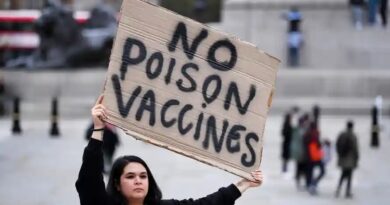Analysis of Batch-Specific Toxicity of COVID-19 Vaccine Products Using VAERS Data

The question of potential batch-specific toxicity of COVID-19 vaccine products is an important one that merits careful investigation. Indeed, history shows that dangerous “hot lots” have existed for past vaccine products. However, researchers investigating this topic should be wary of important artifacts that are present in the publicly-available VAERS data, which can skew analyses and lead to incorrect conclusions.
Several exploratory reports of potential batch-specific toxicity of COVID-19 vaccine products have been posted on the Internet (see here, here, and here) using data from the Vaccine Adverse Event Reporting System (VAERS) database maintained by the US Department of Health & Human Services.
OCLA is researching the VAERS database, and wants to alert the research community to the following issues in the data:
- Approximately 1/3 of adverse event (AE) entries in the VAERS database have no associated batch label. This is a large number of missing batch label assignments.
- For the AEs that do have batch labels, the labels are alpha-numeric strings, which is a data format that is prone to artifacts, such as typos and the presence of multiple label-strings that should be considered to be the same label. The latter can occur due to substitution of lower-case for upper-case letters, inclusion or non-inclusion of a white-space character, replacement of a number by a letter (e.g., “B” versus “8”), etc.
- Examples of spurious batch labels that can be seen by scrolling down the list of batch labels at the link here are the labels “UNKNOWN”, “N/A”, “Pfizer”, “Na”, “?”, “Pfizer-BioNTech”, “unk”, “don’t know”, etc.
- An example of a set of multiple strings that should most likely be considered to be a single unique label are the labels “Ew0158” (1662 AEs), “EwO158” (47 AEs), “#EW0168” (1 AE), and “(EW0158)” (1 AE). These four strings are included as separate entries in the list at the link here. There are many such examples of spurious multiplicity of batch labels in the VAERS data.
- If the above-noted artifacts are not corrected for, then a histogram of AE-frequencies per batch label will include many label-strings that should not be included as unique labels, and these will have low AE-frequencies. Such a histogram cannot be used to infer the probability of low-AE (low “toxicity”) vaccine product batches, and consequently cannot be used to infer the probability of high-AE batches.
- An additional observation that has been presented (at the video here) is an apparent “linear decline in toxicity” vs. batch label for the Pfizer vaccine products, which appears when the batch labels are sorted alpha-numerically and plotted on the x-axis and the number of AEs associated with each label is plotted on the y-axis. This observation can be explained by the fact that Pfizer’s format for labeling their batches correlates with how the batches were administered in time – “E” batches were administered before “F” batches, etc. The VAERS data shows many more AEs and deaths in the early stages of the vaccine rollout than later in the rollout, probably because the vaccine products were initially given to older and frailer people (with the exception of some healthcare workers) and then to progressively younger people. Unlike Pfizer, Moderna’s batch-labeling format does not correlate with how the batches were administered in time, and this explains why no apparent “linear decline in toxicity” is seen for Moderna in the same graph.
The above-noted artifacts have the effect of rendering the currently-available batch-toxicity analyses unreliable, in that their graphical and distributional analyses do not support their stated conclusions. More careful analysis, accounting for the important data-artifact issues, is required.
OCLA researchers have performed detailed data analyses on the VAERS data, which corroborate the need for this cautionary note. OCLA researchers plan to publish their analysis soon, at ocla.ca.
Researcher Jessica Rose made essentially the same cautionary note (with supporting analyses) on December 1, 2021 (here), however her observations have since been largely overlooked by critical experts (e.g., here).
*
Note to readers: Please click the share buttons above or below. Follow us on Instagram, @crg_globalresearch. Forward this article to your email lists. Crosspost on your blog site, internet forums. etc.
Featured image is from Children’s Health Defense


